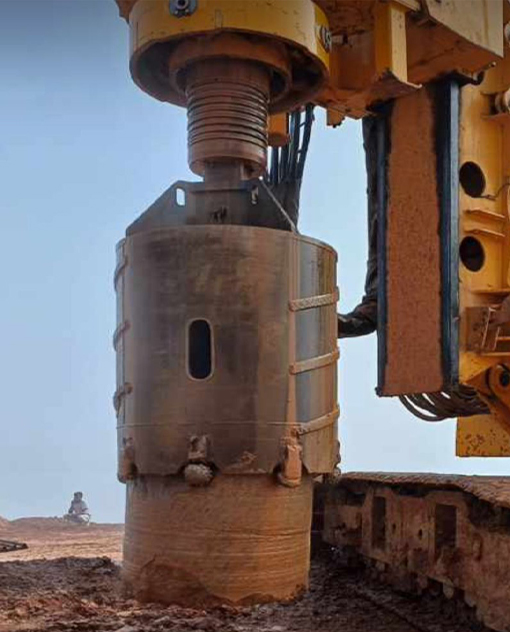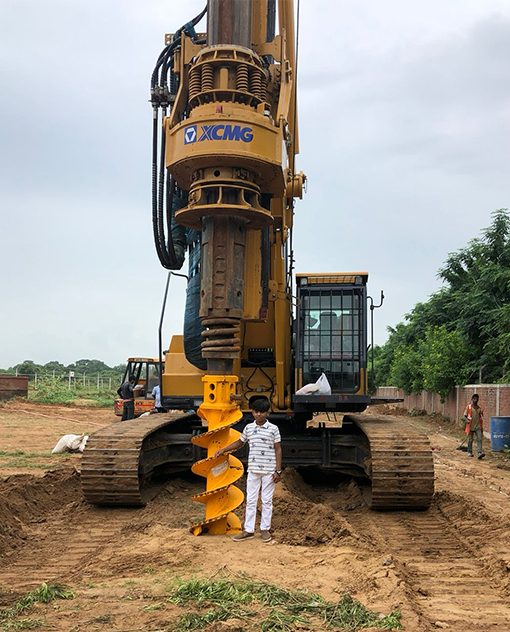Our Product Descriptions
Under-reamed piles, also known as under-reamed drilled shafts or simply under-reamed piles.
Under-reamed piles, also known as under-reamed drilled shafts or simply under-reamed piles, are a type of deep foundation element used to support structures in areas with expansive or compressible soils. They are particularly effective in mitigating the effects of soil movement due to moisture fluctuations. Here's a detailed description of the under-reamed pile construction process:
Under-reamed piles offer several advantages, including increased bearing capacity, improved resistance to soil movement, and suitability for expansive or compressible soils. They are commonly used in the construction of buildings, bridges, retaining walls, and other structures where soil conditions pose challenges to traditional foundation methods.
Here's a breakdown of the process
- Drilling : The process begins with drilling a hole into the ground using a specialized drilling rig equipped with a drilling tool such as an under-reamer. The under-reamer is designed to create an enlarged bulb or bell-shaped cavity at the base of the pile.
- Excavation : As the drilling progresses, soil and other excavated materials are removed from the hole. The diameter of the hole is typically larger at the bottom to accommodate the under-reamed section, while the upper portion may be smaller to match the size of the reinforcement cage.
- Under-reaming : Once the desired depth is reached, the under-reamer is activated to expand and create the bulb-shaped cavity at the base of the pile. This under-reamed section significantly increases the bearing capacity of the pile by providing a larger contact area with the surrounding soil, thus reducing settlement and enhancing stability.
- Reinforcement Installation : Steel reinforcement cages or bars are lowered into the hole, extending into the under-reamed section at the base of the pile. These reinforcements provide additional structural strength and help to distribute the load from the superstructure to the surrounding soil.
- Concrete Placement : After the reinforcement is in place, the hole is filled with concrete using a tremie pipe or pump. The concrete is typically of high strength and quality to ensure the stability and load-bearing capacity of the pile. The tremie method is often used to prevent segregation of concrete and ensure uniform distribution throughout the depth of the hole.
- Curing : Once the concrete is placed, it is allowed to cure and gain sufficient strength before any further construction activities take place. The curing time may vary depending on factors such as temperature, humidity, and the type of concrete used.
- Testing and Quality Control : Quality control measures are implemented throughout the construction process to ensure that the under-reamed piles meet the specified design requirements. This may include testing for integrity, load-bearing capacity, and alignment.

